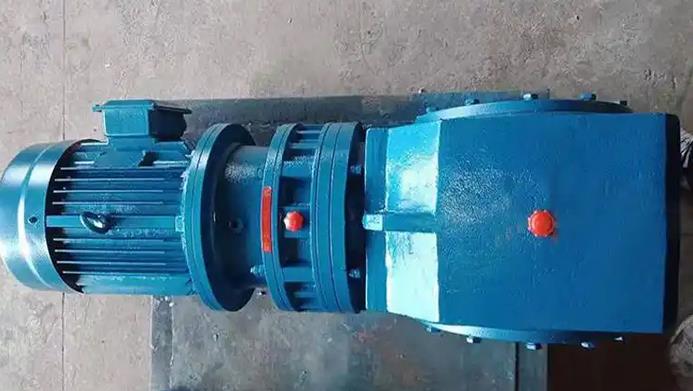How to address the impact of thermal expansion and contraction on the clearance of the ZSCA600-27.3-2 hard-toothed gear reducer.
Here are some methods to address the impact of thermal expansion and contraction on the clearance of ZSCA600-27.3-2 hard tooth reducer:Reasonably adjust the bearing clearance: adopt a shaft system structure with one end fixed and one end moving, and use the end with smaller radial force as the moving end to reduce the frictional force during axial movement. The fixed end bearing bears axial force, and by adjusting gaskets or round nuts, the movable end bearing maintains an appropriate amount of clearance to cope with thermal expansion and contraction phenomena. When adjusting, the gear meshing should be taken as the basis to ensure that the contact spots, tooth side clearance, and tooth top clearance of the two gears meet the requirements, so that the reducer rotates quickly and flexibly.

Optimizing gear backlash design: During the design phase, based on the working conditions and accuracy requirements of the gear, computer-aided engineering (CAE) software is used for simulation and analysis to optimize the geometric shape of the gear, determine the appropriate gear backlash, compensate for the effects of thermal expansion and contraction, and prevent jamming or excessive pressure caused by material expansion. At the same time, precise measurement techniques and quality control measures are used in the manufacturing process to ensure the accuracy of the gears.
Choosing the appropriate lubricant: Different lubricants have different rheological properties and have varying effects on the dynamic clearance of the gearbox. For example, a gearbox using ISO VG220 synthetic grease has lower clearance fluctuations than mineral oil after continuous operation. According to the working conditions of the reducer, lubricating media that can effectively reduce clearance fluctuations can be selected, and lubricating oil should be replaced regularly to ensure good lubrication effect and reduce clearance changes caused by component wear due to poor lubrication.
Control the working environment temperature: Install cooling or insulation equipment around the reducer to stabilize its working environment temperature, reduce the amplitude of temperature changes, and thus reduce the impact of thermal expansion and contraction on the gap. For example, for reducers working in high-temperature environments, cooling devices such as fans and cooling water pipes can be installed; In cold environments, insulation measures can be taken, such as wrapping insulation materials.
Strengthen monitoring and maintenance: Develop regular maintenance plans to check the clearance of the gearbox, using high-precision measuring tools such as laser interferometers in conjunction with encoder closed-loop detection, and adjust the clearance in a timely manner based on the measurement results. At the same time, record each detection data and use data analysis and prediction models to guide the optimization of gaps. In addition, it is necessary to check the wear of components such as gears and bearings, and replace damaged parts in a timely manner.


